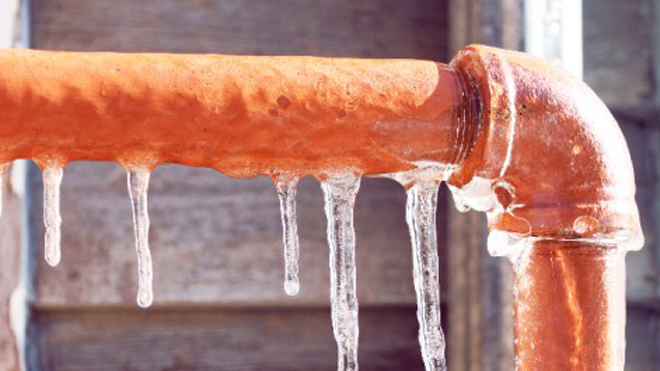Preventing Your Pipes from Freezing: Effective Tips
Preventing Your Pipes from Freezing: Effective Tips
Blog Article
The article author is making several great points relating to How to prepare your home plumbing for winter weather overall in the article underneath.

Cold weather can damage your pipes, especially by freezing pipes. Here's exactly how to stop it from occurring and what to do if it does.
Introduction
As temperature levels decrease, the threat of icy pipelines rises, potentially leading to pricey fixings and water damages. Recognizing how to prevent frozen pipes is important for homeowners in cool environments.
Avoidance Tips
Protecting at risk pipelines
Cover pipes in insulation sleeves or utilize heat tape to secure them from freezing temperatures. Focus on pipelines in unheated or external locations of the home.
Home heating strategies
Maintain interior rooms appropriately heated, particularly locations with pipes. Open up cabinet doors to allow warm air to circulate around pipelines under sinks.
Exactly how to identify icy pipes
Seek lowered water flow from taps, unusual smells or sounds from pipes, and visible frost on subjected pipelines.
Long-Term Solutions
Architectural changes
Think about rerouting pipes away from outside walls or unheated locations. Include added insulation to attic rooms, cellars, and crawl spaces.
Updating insulation
Invest in high-quality insulation for pipes, attic rooms, and walls. Proper insulation helps keep regular temperatures and reduces the risk of frozen pipes.
Securing Outdoor Pipes
Garden tubes and outside faucets
Separate and drain garden hoses prior to wintertime. Set up frost-proof faucets or cover outdoor taps with shielded caps.
Recognizing Frozen Pipelines
What creates pipelines to freeze?
Pipelines freeze when revealed to temperatures listed below 32 ° F (0 ° C) for prolonged durations. As water inside the pipelines ices up, it broadens, putting pressure on the pipeline walls and possibly creating them to burst.
Threats and problems
Icy pipelines can result in water system disruptions, building damages, and pricey repairs. Ruptured pipelines can flooding homes and create comprehensive architectural damage.
Signs of Frozen Water Lines
Recognizing frozen pipelines early can prevent them from bursting.
What to Do If Your Pipelines Freeze
Immediate activities to take
If you think icy pipes, keep taps open up to eliminate pressure as the ice melts. Make use of a hairdryer or towels soaked in warm water to thaw pipes gradually.
Verdict
Preventing icy pipes requires proactive actions and quick feedbacks. By comprehending the causes, indications, and preventive measures, homeowners can shield their plumbing during winter.
5 Ways to Prevent Frozen Pipes
Drain Outdoor Faucets and Disconnect Hoses
First, close the shut-off valve that controls the flow of water in the pipe to your outdoor faucet. Then, head outside to disconnect and drain your hose and open the outdoor faucet to allow the water to completely drain out of the line. Turn off the faucet when done. Finally, head back to the shut-off valve and drain the remaining water inside the pipe into a bucket or container. Additionally, if you have a home irrigation system, you should consider hiring an expert to clear the system of water each year.
Insulate Pipes
One of the best and most cost-effective methods for preventing frozen water pipes is to wrap your pipes with insulation. This is especially important for areas in your home that aren’t exposed to heat, such as an attic. We suggest using foam sleeves, which can typically be found at your local hardware store.
Keep Heat Running at 65
Your pipes are located inside your walls, and the temperature there is much colder than the rest of the house. To prevent your pipes from freezing, The Insurance Information Institute suggests that you keep your home heated to at least 65 degrees, even when traveling. You may want to invest in smart devices that can keep an eye on the temperature in your home while you’re away.
Leave Water Dripping
Moving water — even a small trickle — can prevent ice from forming inside your pipes. When freezing temps are imminent, start a drip of water from all faucets that serve exposed pipes. Leaving a few faucets running will also help relieve pressure inside the pipes and help prevent a rupture if the water inside freezes.
Open Cupboard Doors
Warm your kitchen and bathroom pipes by opening cupboards and vanities. You should also leave your interior doors ajar to help warm air circulate evenly throughout your home.
:strip_icc()/snow-outdoor-faucet-pipes-4af65d1e5e904fb1aa7bf74071fe5d89.jpg)
Hopefully you enjoyed reading our article on How To Avoid Freezing Pipes. Thank you for taking time to browse our blog post. Sharing is caring. Helping people is fun. Thanks for being here. Kindly visit our blog back soon.
Book An Estimate Now Report this page